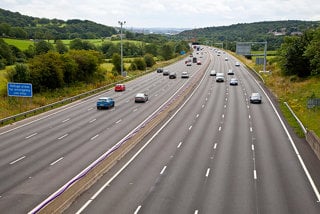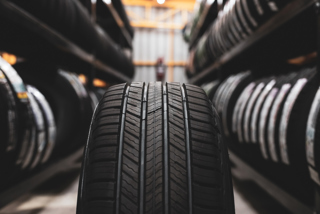Drivers are being warned about the dangers of tailgating after cameras captured 60,000-plus incidents on a stretch of the M1 in a single year.
Eight in 10 motorists said they were aware of the ‘two-second rule’, in a National Highways poll, while three-quarters (75%) claimed they had never driven too close to the vehicle in front within the previous three months.
However, a recent trial of new tailgating cameras on a stretch of the M1 captured 60,343 incidents of vehicles driving too close over a 12-month period.
Last year, National Highways and Northamptonshire Police joined forces in the trial to raise awareness and deter tailgating.
Cameras were used on lane one of a stretch of the M1 over 12 months to automatically detect vehicles driving too close.
From the 60,343 detections, there were 10,994 repeat offenders and 2,144 letters were sent to drivers warning they had driven too close and highlighting the dangers of not leaving safe braking distances.
Drivers caught in the trial were not prosecuted but advised they had been tailgating and given educational material demonstrating the dangers of driving too close.
Driving too close to another vehicle can lead to prosecution for ‘driving without due care and attention’. This offence carries a minimum fine of £100 and three penalty points, and in some cases more severe penalties or a court appearance.
National Highways has now launched a campaign to tackle the issue of tailgating which is a factor in around one in eight crashes on England’s motorways and major A roads.
Jeremy Phillips, National Highways head of road safety, Jeremy Phillips, said: “Unfortunately, as highlighted by the M1 trial, we know that too many people are driving too close on our roads.
“Most tailgating is unintentional by drivers who don’t realise that they are infringing on someone else’s space. But not leaving enough space between you and the vehicle in front is not only very frightening for that driver, it could have devastating consequences.”
Phillips warned that closer a driver gets, the less time they have to react and to stop safely. “To avoid inadvertently getting too close to the vehicle in front, we would urge drivers to use the two-second rule and to always ‘stay safe, stay back’,” he added.
The Highway Code tells drivers to allow at least a two-second gap between you and the vehicle in front on roads carrying faster-moving traffic and in tunnels where visibility is reduced.
The gap should be wider as speeds increase. It rises to 2.4 seconds – about 53 metres – when driving at 50mph and 3.1 seconds – or 96 metres – at 70mph.
Furthermore, the gap should be at least doubled on wet roads and increased still further on icy roads.
To use the rule, drivers should allow the vehicle in front to pass a fixed object such as a lamp post or road sign then count to two seconds. If they reach two seconds before reaching the reference marker they need to drop back.
Jason Wakeford, head of campaigns at Brake, says it is vital that drivers leave enough distance between the vehicle in front in order to react in time to any sudden dangers.
“We’d urge everyone to respect the two-second rule to keep them, and others on the road, safe,” said Wakeford.
National Highways has a dedicated webpage where drivers can find more information about tailgating and what they can do to stay safe.






















Login to comment
Comments
No comments have been made yet.